
11. “The Country Bears” (2002)
If you have no idea what “The Country Bears” even is, you are forgiven. The Country Bear Jamboree opened with the rest of Walt Disney World’s Magic Kingdom on October 1, 1971. It was based on a concept originally developed for Walt Disney’s Mineral King project (a ski resort that would have elements like a musical animatronics-filled revue where bears sing occasionally problematic songs) and was later ported over, less successfully, to Disneyland in 1972 (where it closed mere months before the movie opened) and more successfully to Tokyo Disneyland in 1983 (still going strong today).
The movie version of the sit-down attraction is actually a music-filled road movie, basically “The Blues Brothers” but with bears. Not that the movie is totally unworthy – the bears themselves, brought to life by Jim Henson’s Creature Shop, are impressive, although they would have been more fun if they were actually based on Marc Davis’ designs for the characters from the attraction. (Sigh.) Also, Christopher Walken gives a genuinely deranged performance as a villain who wants to tear down the Bears’ music hall. (There are tons of cameos from people like Elton John, Don Henley and, um, Xzibit.) Here’s some bonus Disney trivia: “The Country Bears” director Peter Hastings never made another movie but he did direct the pre-show for Mission: SPACE at Walt Disney World, which was based, in part, on another movie on this list (truly the ouroboros of Disney theme park movies). So there’s that!
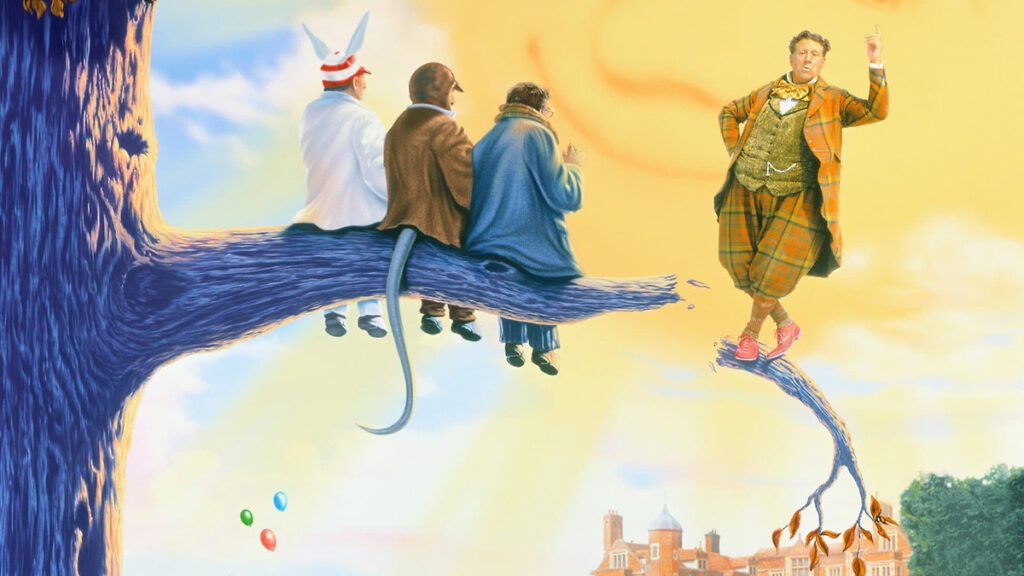
10. “Mr. Toad’s Wild Ride” (1996)
When this movie finally opened stateside, it was called “The Wind in the Willows.” But that theatrical release was brief and uneventful and when the movie was finally issued on home video it had a brand-new title – “Mr. Toad’s Wild Ride.” Mr. Toad’s Wild Ride, of course, opened with the rest of Disneyland on July 15, 1955. (A version opened in Walt Disney World with the opening of the Magic Kingdom and closed in 1998, the same year this movie hit home video.) And the story does have long ties to Disney; Walt Disney wanted to do an entire feature based on Kenneth Grahame’s 1908 novel but settled for half of a package film (1949’s “The Adventures of Ichabod and Mr. Toad”).
Not that this Monty Python-adjacent movie has much to do with either the original animated featurette or the Disney attraction, besides some shared characters and the concept of Mr. Toad (writer/director Terry Jones, painted green) being a reckless driver. Despite a terrific cast (that included Python members Eric Idle and Michael Palin), the movie is flatter-looking than the sets in the attraction. It’s a curio that scratches an itch for both Python obsessives and Disney nerds alike.

9. The Other “Pirates of the Caribbean” Sequels (2011 – 2017)
We must talk about this – that there is a clear delineation in the quality of the “Pirates of the Caribbean” franchise. The delineation is marked by Gore Verbinski, the fussy visionary behind the first three films, leaving the franchise behind. The first non-Verbinski “Pirates of the Caribbean” movie, 2011’s “Pirates of the Caribbean: On Stranger Tides,” was written by series mainstays Ted Elliott and Terry Rossio, this time incorporating not only elements from the theme park attraction (which opened at Disneyland in 1967 and has been exported to Walt Disney World in Florida, Tokyo Disneyland and Disneyland Paris) but also the plot of an entirely unaffiliated novel, Tim Powers’ 1987 fantasy book “On Stranger Tides.” That could have been something, except that the direction was handled by Rob Marshall, the filmmaker behind the Oscar-winning “Chicago,” who doesn’t bring any of the energy or wit from that earlier production. And the supernatural elements, which include some bloodthirsty mermaids and a living ship, feel tired.
They did incorporate the “burning town” scene from the original attraction in a fun way. It made over $1 billion worldwide. It was followed by “Pirates of the Caribbean: Dead Men Tell No Tales” in 2017, directed by the Norwegian duo of Joachim Rønning and Espen Sandberg, which was a marked improvement (Javier Bardem’s ghostly private villain is a hoot) but still much less entertaining and fun than the original trilogy. And this isn’t even factoring in Johnny Depp’s real-life troubles, which were beginning to surface around the time of the fifth film’s release. (This is to say nothing of his incredibly slack performance in the film; it was later revealed that he didn’t learn his lines and had them fed to him via a hidden earpiece.) If either of the latter two movies were a ride, you wouldn’t get back in line to experience them again.
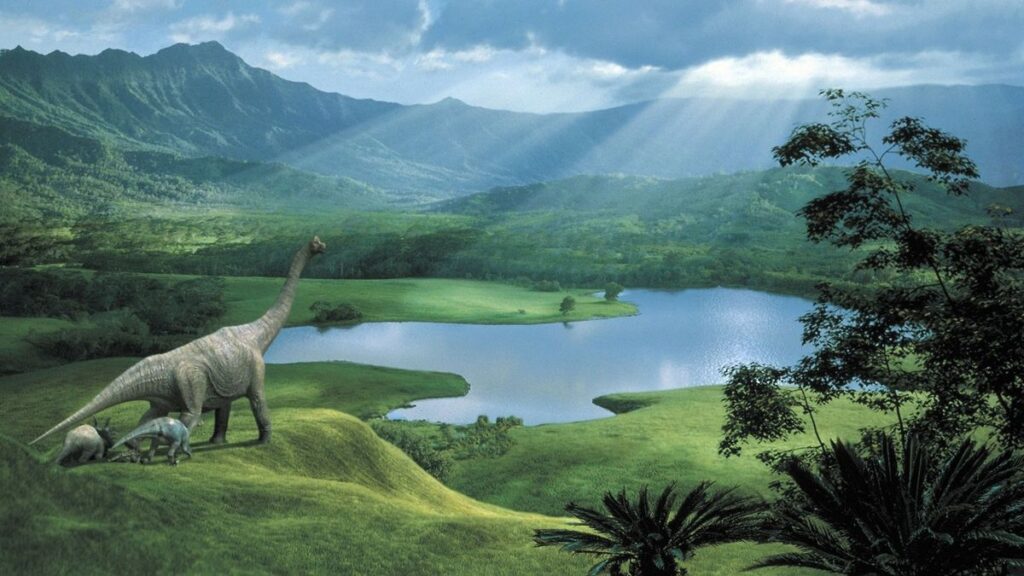
8. “Dinosaur” (2000)
This is one of those cases where Disney, in their synergistic highpoint of the 1990s, was developing two things at the same time – an animated movie about dinosaurs that utilized real-life plate photography and an attraction based around a trip to the prehistoric past for a new theme park they were opening called Disney’s Animal Kingdom at Walt Disney World in Florida. At one point both projects even had the same name – Countdown to Extinction. (“Developing the film along with an attraction would create a kind of reciprocal process between the studio and Imagineering,” former Disney exec Thomas Schumacher said in the “Dinosaur” making-of book.)
And, truth be told, Countdown to Extinction (the attraction) opened before the movie (which was later titled “Dinosaur,” a move that then necessitated a rebranding of the ride) on April 22, 1998 (with the rest of Animal Kingdom). The movie wouldn’t open for another two years. And as it stands – it’s pretty lackluster. Some of the animation was great (and still is) some was crummy (and still is). And neither the movie nor the attraction feed into one another in a meaningful way, meaning that Disney’s grand “reciprocal process” was an utter dud. Since nobody remembers the movie can we call the attraction Countdown to Extinction again? Please?
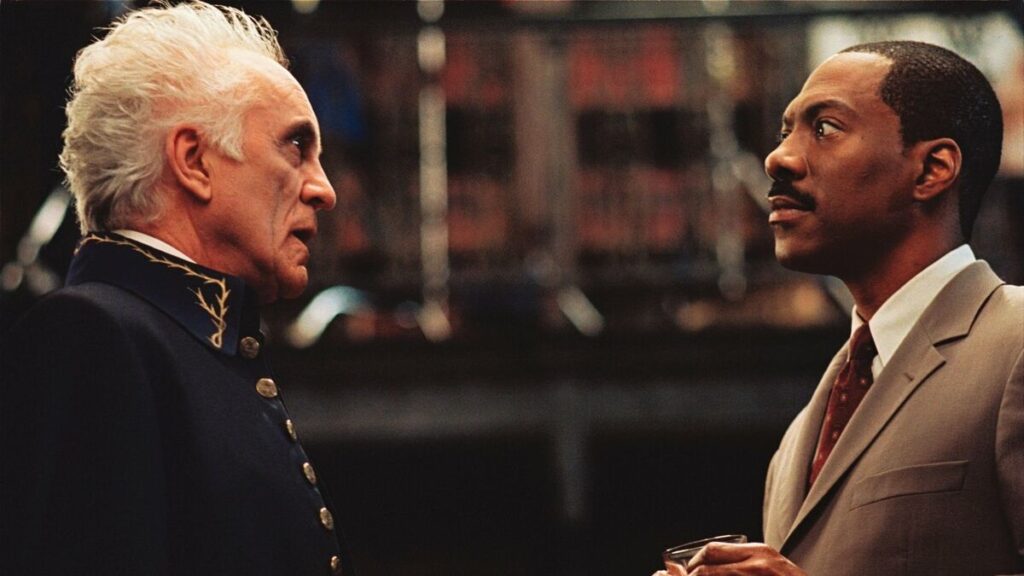
7. “The Haunted Mansion” (2003)
Released the same summer as “Pirates of the Caribbean,” “The Haunted Mansion” was meant to secure the hypothesis that, after a bumpy start, making movies based on Disney attractions was something that really worked, that audiences responded to, and that made lots of money. Unfortunately, “The Haunted Mansion” didn’t quite work out that way.
Based on the attraction that opened at Disneyland in 1969 and shares the same New Orleans Square land with the Pirates of the Caribbean attraction (later versions opened at Walt Disney World in Florida, Tokyo Disneyland and Disneyland Paris), this version starred Eddie Murphy, then still in his family movie hot streak, as a realtor who gets roped into a mystery at the Haunted Mansion.
Directed by “The Lion King” filmmaker Rob Minkoff and produced by Disney Legend Don Hahn, the movie feels oddly ashamed of its source material, making Madame Leota (Jennifer Tilly) a minor character and having a cursory sequence where Murphy and his family travel through a cemetery, which re-creates much of the end of the ride and honestly goes a long way. (There’s also a fun scene with the singing busts.) It’s also worth noting that legendary make-up man and creature creator Rick Baker does some great work that barely makes it into the final movie. Beyond that, the tone and – forgive the pun! – spirit of the original attraction (worked on by some of the best minds at Walt Disney Imagineering including X. Atencio, Marc Davis, Yale Gracey and Rolly Crump) is nowhere to be found. And Murphy doesn’t even get off any good zingers. Deathly.
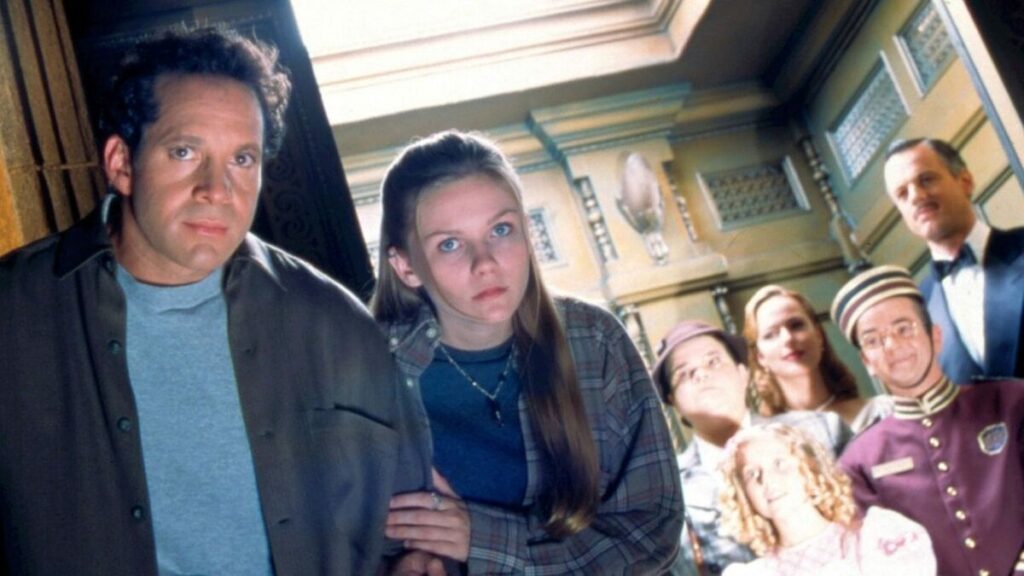
6. “Tower of Terror” (1997)
In a lot of ways the “Tower of Terror” movie, which aired as a “Wonderful World of Disney” episode on October 26, 1997, feels like a test run on the idea of making movies out of Disney theme park attractions. The attraction the film was based on opened just a few years before, in 1994, at what was then known as Disney-MGM Studios. (Modified versions later opened at Disney California Adventure, Walt Disney Studios in Paris and Tokyo DisneySea.) Oddly, the movie (like the Japanese version of the attraction) omits any connection to “The Twilight Zone,” which was a hallmark of the original ride, complete with a queue video featuring Rod Serling welcoming guests into their own episode of the iconic series. Instead, “Tower of Terror” follows Steve Guttenberg as a tabloid reporter and his daughter (Kirsten Dunst) as they investigate the mysterious disappearance of several people in a hotel in Hollywood on Halloween, 1939. As written and directed by D.J. MacHale, a veteran of Nickelodeon’s similar “Are You Afraid of the Dark?,” the “Tower of Terror” movie is just the right amount of spooky and always very charming. It’s become something of a Halloween favorite. And for good reason.
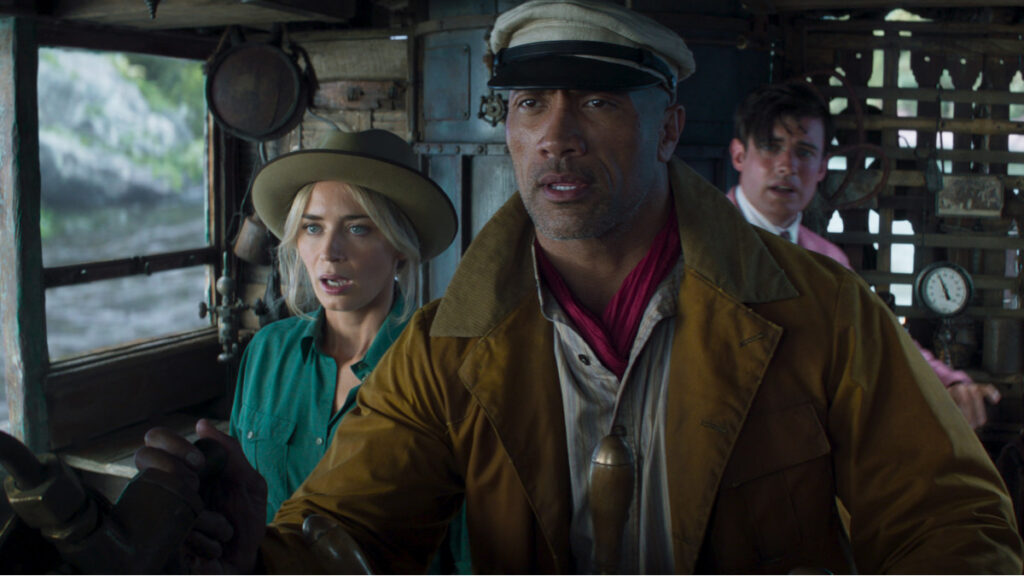
5. “Jungle Cruise” (2021)
A movie version of the Jungle Cruise, an opening day attraction at Disneyland that would later travel to Walt Disney World in Florida, Tokyo Disneyland and Hong Kong Disneyland, had been planned since at least 2004, following the success of “Pirates of the Caribbean.” Early versions envisioned a live-action team-up of “Toy Story” buddy duo Tim Allen and Tom Hanks (this version featured a modern adventure). But the movie wouldn’t really gain steam until 2017, when Dwayne Johnson signed on to star and produce. Emily Blunt signed on not long after. And what’s fun about the movie, particularly in the early section, is watching Johnson fully inhabit the role of “skipper,” just like in the attraction (complete with a reference to “the backside of water”).
Johnson and Blunt have undeniable chemistry and the movie is a rollicking good time, liberally mixing adventure movie tropes with overt supernatural elements (a combination that worked exceedingly well for the “Pirates of the Caribbean” franchise). That good time is only softened by the somewhat generic villains and the lack of replicating some of the more comedic elements of the theme park attraction. Hampered by the pandemic, the movie was released simultaneously on Disney+ and in theaters, which is a shame. It worked much better on the big screen. Plans for a sequel were quickly announced but no additional information ever materialized. Those plans might have gotten lost in the thick Amazon foliage.

4. “Haunted Mansion” (2023)
For years, Disney promised a new live-action “Haunted Mansion” movie; in 2010 at San Diego Comic Con they passed out a poster for a version that was to be directed by Guillermo del Toro (it was later revealed Ryan Gosling would star). This version obviously never happened and remains a tantalizing what-if for both Disney fanatics and film fans. A WGA directory shows that everyone from del Toro and his frequent writing partner Matthew Robbins to “Catch Me If You Can” writer Jeff Nathanson (who wrote “Pirates 5”) to “The Lone Ranger” writer Justin Haythe all took a crack at the script in the meantime.
The job would finally get done thanks to Kate Dippold, who wrote the 2016 “Ghostbusters” remake, and director Justin Simien (a former Disneyland cast member). And the results are really great, actually. Instead of shying away from the source material, this new “Haunted Mansion” leans into it embracing not only the mythology of the attraction but material that didn’t even make it into the ride, like the story of the doomed mariner (one of the proposed storylines) and a candle ghost that was leftover from a version of the Haunted Mansion when it was meant to be a walkthrough attraction.
LaKeith Stanfield plays a New Orleans tour guide, still mourning the death of his wife, who is recruited by a young mother (Rosario Dawson) to help investigate the very haunted house she and her young son (Chase W. Dillon) have just moved into. Tiffany Haddish is a medium, Danny De Vito is a professor and Owen Wilson is a priest, all hired to help as well. They soon uncover a villainous plot, but not before nearly every gag in the attraction has been given wonderful new life on the big screen. Jared Leto plays the Hatbox Ghost, a sinister specter that was part of the original attraction but only lasted a few weeks (the effect of his head disappearing and re-appearing inside his hatbox didn’t work); he was finally reinstalled as part of the Disneyland 60th anniversary celebration. Now he’s been reinvented again – this time for the big screen. It’s a scream.
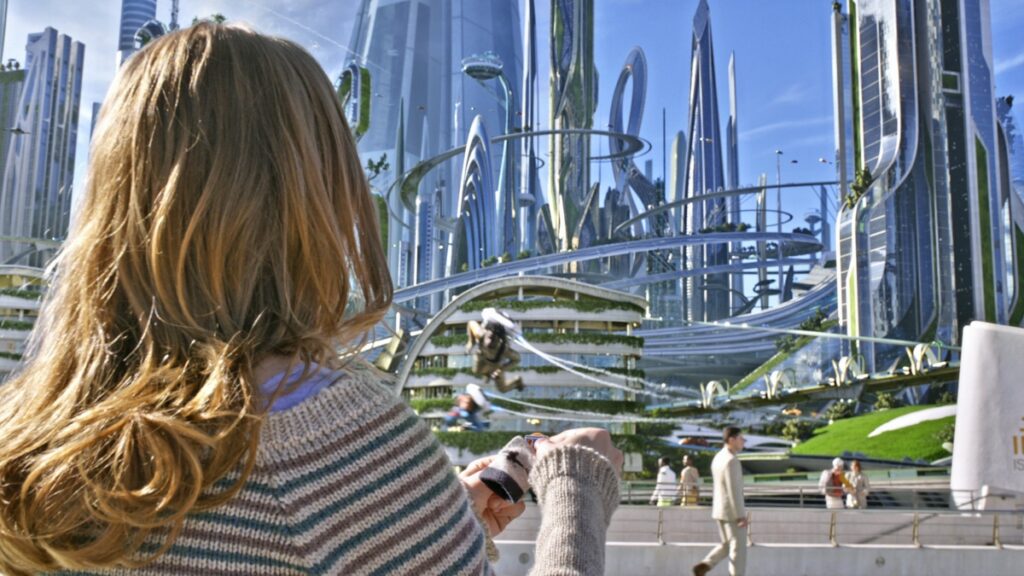
3. “Tomorrowland” (2015)
While “Tomorrowland” isn’t technically based on any single Disney attraction, it borrows its title and its futuristic utopian outlook from the sci-fi-themed land that opened as part of the original Disneyland in 1955 and has become a problematic staple of Disney theme parks around the world. (There’s nothing more annoying than trying to keep ahead of the future.) Brad Bird’s ambitious 2015 film wonders what would happen if Tomorrowland was an actual place, originated by the greatest minds on the planet (including Walt Disney), as a place where dreamers could dream without the intervention of commerce or government. It’s a fascinating concept, exemplified by an early sequence set at the 1964-65 World’s Fair in Queens, which is where it’s a small world and Carousel of Progress first dazzled guests. (Scenes were filmed at Disneyland and Walt Disney World.)
In many ways “Tomorrowland” feels like a rebuttal to movies like “Mad Max: Fury Road” (which it ended up opening alongside), arguing that a cheery attitude and a technological curiosity might be enough to save us from ourselves. Of course, this is wrapped inside an entertaining road movie, where a young dreamer (Britt Robertson) and a Tomorrowland exile (George Clooney) race to save the great big beautiful world of Tomorrowland from destruction. It doesn’t totally work, but a movie this gloriously weird and inventively staged (the sequence where robot henchmen attack Clooney at his trap-fortified home is an all-timer) should be loudly celebrated. While the movie wasn’t a smash, it has developed a vocal fan following in the years since, some of which have even constituted a new version of the movie using footage left out of the actual release (supposedly the original cut by Walter Murch was brilliant but openly despised by Disney execs). This is a flawed classic ripe for rediscovery.
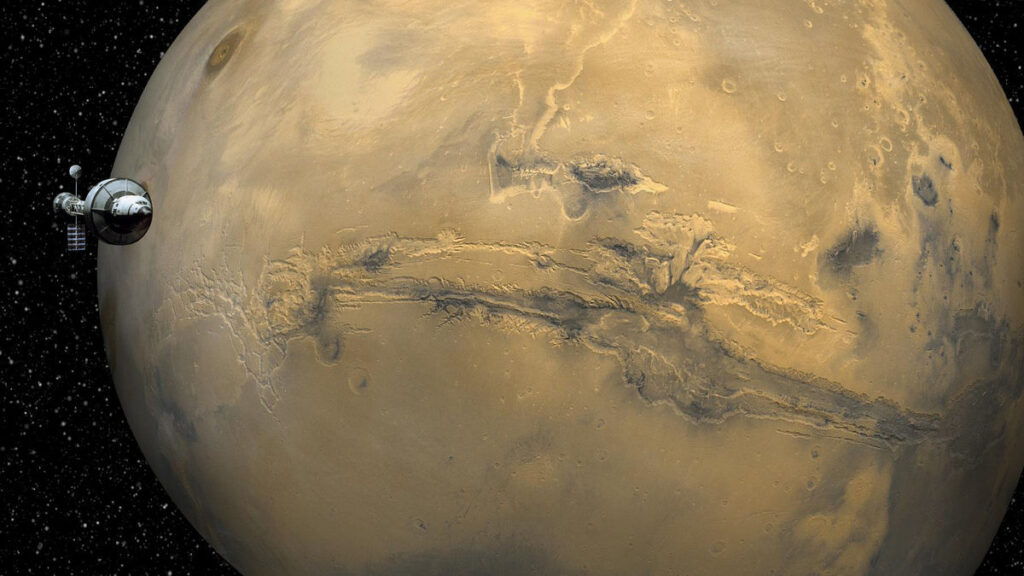
2. “Mission to Mars” (2000)
Few even realize that Brian De Palma’s space opera “Mission to Mars” was the first theatrical movie based on a Disney theme park attraction. But here we are. “Mission to Mars” is based on an attraction that opened with the rest of Disneyland in 1955, only back then it was called Rocket to the Moon. When we landed on the moon, the attraction because less science fiction and more science fact so it was renamed Mission to Mars in 1975. (It was also re-named at Walt Disney World’s Magic Kingdom.) A sort of proto-simulator attraction, it imagined what it would be like to travel to the red planet.
The film version of the attraction, directed by De Palma after Gore Verbinski left shortly before production began, is full of big ideas and typically dynamic set pieces (there’s an early sequence with a sentient dust storm that is harrowing and a doomed spacewalk that is heartbreaking), buoyed by a strong cast led by Gary Sinise and Don Cheadle. And while De Palma had a terrible time making the movie (he wouldn’t make another Hollywood production again) and the alien is maybe the worst creature design in motion picture history, it doesn’t rob “Mission to Mars” of any of its elemental power. This is still De Palma at the height of his powers, working with some of his most trusted collaborators (including editor Paul Hirsch and composer Ennio Morricone, who brought organs to space more than a decade before Hans Zimmer did the same thing on “Interstellar”) on a truly unbelievable scale.
It is also special because it was based on a Disney attraction and then inspired another Disney attraction – Mission: SPACE at EPCOT in Florida, which used to feature Gary Sinise in the pre-show (the one directed by the guy who made “The Country Bears”) and has props and sets from “Mission to Mars” dot the queue (still there to this day!) If you’ve never seen “Mission to Mars,” it’s a big-hearted, expertly crafted, deeply fun film that sees De Palma drawing influence from movies he loves but totally making them his own. At one point he seems to ask: what if the “2001” zero-G sequence, but with Van Halen? And the answer is glorious.
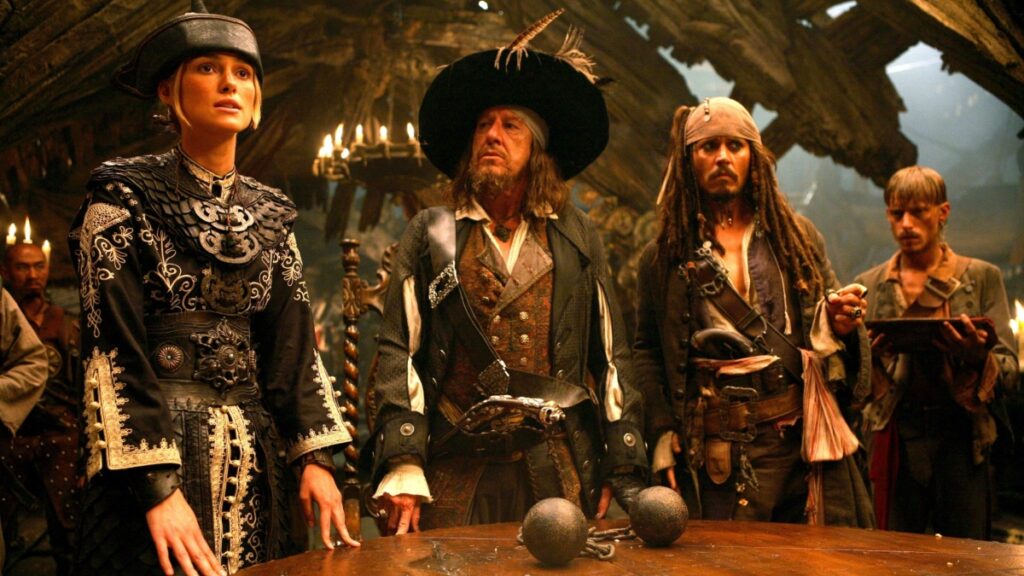
1. Gore Verbinski’s “Pirates of the Caribbean” Trilogy (2003 – 2007)
The first three “Pirates of the Caribbean” movies remain the alpha and the omega of movies based on Disney theme park attractions. As stated above, Verbinski, Depp and the rest of the team were wading into unproven waters. And the first film was a constant struggle, with Disney’s consumer products team refusing to support the movie with toys and other merchandise because they found the script too complicated and Verbinski “quit or came close to quitting at least four times” (according to Stewart in “Disney War”) with the constant threat of Disney actually firing him.
Executives freaked out about Depp’s swishy performance and general look (they bickered about the amount of gold teeth he was allowed to have) and the general atmosphere was combative and unpleasant. Eisner was so worried about people thinking the connection to the theme park attraction was goofy that he insisted on the cumbersome subtitle (which doesn’t even make any sense).
But sometimes friction makes fire. And the first film was not just an artistic triumph, with Verbinski nimbly mixing in those supernatural elements Elliott and Rossio so desperately wanted with a more traditional seafaring adventure, but a commercial one too – making more than $650 million and earning five Academy Award nominations (including Best Actor for Depp). And part of what makes it so special is that, yes, it includes moments and iconography from the attraction but it does so in new, unique, clever ways and captures, more than anything 1:1, the spirit of the ride. It seemed impossible. But they did it.
Somehow, Disney convinced Verbinski, Bruckheimer, Elliott and Rossio, to return for not one but two sequels, shot back-to-back and released over two summers. 2006’s “Pirates of the Caribbean: Dead Man’s Chest,” wound up being Disney’s most popular movie ever (and it’s first to gross over $1 billion). 2007’s “Pirates of the Caribbean: At World’s End,” wasn’t as successful financially but is easily the most artistically admirable of the trilogy, with Verbinski tipping the gentle surrealism and implied horror of the first two movies into an aggressively weird, violent territory and his penchant for large-scale action scenes going completely overboard thanks to an extravagantly staged ship-to-ship battle that remains one of the coolest sequences committed to film. (Just think of the sequence where Tom Hollander’s East India Trading Company goon Beckett gets blown to smithereens in slow motion.)
Both sequels judiciously borrowed from the attraction while forging their own path that would, in turn, inspire additions to the attraction. (Even after all of Depp’s personal troubles, Captain Jack Sparrow remains a fixture of the theme parks around the world – just watch YouTube clips for the Shanghai Pirates attraction.) The specialness of these three movies cannot be overstated. They exemplify what using the attractions as a template can be, and all the ways that you can blow past whatever expectations that framework might conjure up.














